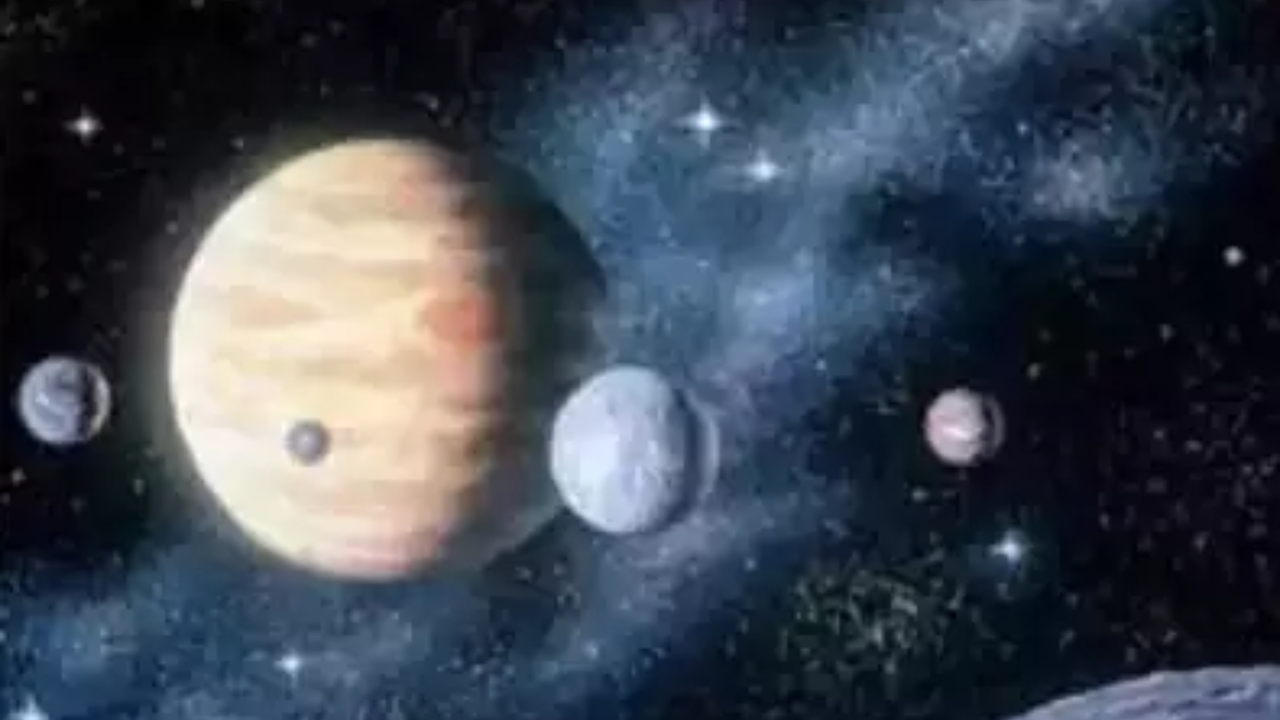NEW DELHI: Astronomers using archived data from the giant Keck II telescope on Mauna Kea in Hawaii have successfully glimpsed Uranus’ infrared aurora for the first time, reported Space.com.
In a discovery reminiscent of Earth’s dazzling auroras, scientists have unveiled the fascinating secrets behind Uranus’ mesmerizing light shows. Just like the Northern Lights on our planet, the auroras on Uranus are ignited when charged particles from the solar wind engage with the planet’s magnetic field, steering them towards the magnetic poles.As these particles enter Uranus’ atmosphere, they collide with its atmospheric molecules, setting them aglow.
While Earth’s auroras shine in shades of red, green, and blue due to collisions with oxygen and nitrogen atoms, Uranus boasts a unique spectacle. This ice giant’s predominant atmospheric gases are hydrogen and helium, which exist at much colder temperatures compared to our home planet. Consequently, Uranus’ auroral glow predominantly emits ultraviolet and infrared wavelengths.
The initial sighting of Uranus’ ultraviolet aurora dates back to 1986 when NASA’s Voyager 2 probe made its historic flyby. However, it has taken nearly four decades to detect its infrared counterpart.
In a breakthrough, astronomers, led by graduate student Emma Thomas from the University of Leicester in England, have employed data collected in 2006 using the Keck II Near-Infrared Spectrometer (NIRSPEC). Their findings unveiled the presence of emission lines originating from the H3+ molecule. H3+ is a unique trihydrogen cation with three protons and only two electrons, rendering it positively charged.
The observed Uranus emission occurs when molecular hydrogen undergoes ionization and forms H3+ cations following encounters with charged particles. This phenomenon generates an awe-inspiring infrared auroral glow over the planet’s northern magnetic pole. In essence, Thomas’ team has provided a glimpse into the stunning spectacle of Uranus’ northern lights.
“The temperature of all the gas giant planets, including Uranus, are hundreds of degrees Kelvin/Celsius above what models predict if only warmed by the sun, leaving us with the big question of how these planets are so much hotter than expected,” said Thomas in a statement, according to Space.com.
“One theory suggests the energetic aurora is the cause of this, which generates and pushes heat from the aurora down towards the magnetic equator,” the statement further read.
In a discovery reminiscent of Earth’s dazzling auroras, scientists have unveiled the fascinating secrets behind Uranus’ mesmerizing light shows. Just like the Northern Lights on our planet, the auroras on Uranus are ignited when charged particles from the solar wind engage with the planet’s magnetic field, steering them towards the magnetic poles.As these particles enter Uranus’ atmosphere, they collide with its atmospheric molecules, setting them aglow.
While Earth’s auroras shine in shades of red, green, and blue due to collisions with oxygen and nitrogen atoms, Uranus boasts a unique spectacle. This ice giant’s predominant atmospheric gases are hydrogen and helium, which exist at much colder temperatures compared to our home planet. Consequently, Uranus’ auroral glow predominantly emits ultraviolet and infrared wavelengths.
The initial sighting of Uranus’ ultraviolet aurora dates back to 1986 when NASA’s Voyager 2 probe made its historic flyby. However, it has taken nearly four decades to detect its infrared counterpart.
In a breakthrough, astronomers, led by graduate student Emma Thomas from the University of Leicester in England, have employed data collected in 2006 using the Keck II Near-Infrared Spectrometer (NIRSPEC). Their findings unveiled the presence of emission lines originating from the H3+ molecule. H3+ is a unique trihydrogen cation with three protons and only two electrons, rendering it positively charged.
The observed Uranus emission occurs when molecular hydrogen undergoes ionization and forms H3+ cations following encounters with charged particles. This phenomenon generates an awe-inspiring infrared auroral glow over the planet’s northern magnetic pole. In essence, Thomas’ team has provided a glimpse into the stunning spectacle of Uranus’ northern lights.
“The temperature of all the gas giant planets, including Uranus, are hundreds of degrees Kelvin/Celsius above what models predict if only warmed by the sun, leaving us with the big question of how these planets are so much hotter than expected,” said Thomas in a statement, according to Space.com.
“One theory suggests the energetic aurora is the cause of this, which generates and pushes heat from the aurora down towards the magnetic equator,” the statement further read.
Denial of responsibility! Swift Telecast is an automatic aggregator of the all world’s media. In each content, the hyperlink to the primary source is specified. All trademarks belong to their rightful owners, all materials to their authors. If you are the owner of the content and do not want us to publish your materials, please contact us by email – swifttelecast.com. The content will be deleted within 24 hours.


